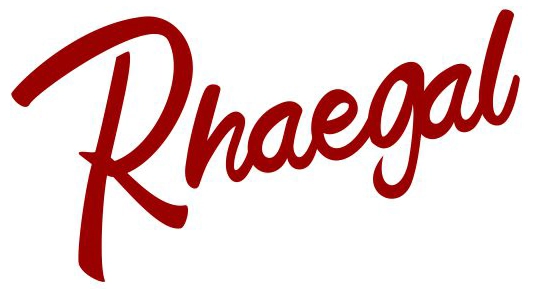Need Reading Glasses? Understanding the Lowest Strength Available
Have you noticed words on a page becoming a bit fuzzy or holding your book farther away to see clearly? If so, you might need reading glasses. This article will help you understand the lowest strength available for reading glasses and guide you in finding the right pair to make reading enjoyable again.
What Are Reading Glasses and Why Do We Need Them?
Lesebrille are special lenses that help us see things up close. As we grow older, our eyes may struggle to focus on nearby objects—a condition called presbyopia. This is a natural part of aging, and wearing reading glasses can make a big difference.
The Basics of Presbyopia
- Presbyopia happens to almost everyone, usually starting around age 40.
- It makes it harder to read small print or see things up close.
- Reading glasses correct this by adjusting the focus of light entering your eyes.
Understanding Reading Glasses Strength
Reading glasses strength refers to how much the lenses bend light to help you see clearly. This strength is measured in units called diopters. The higher the diopter number, the stronger the lenses.
What Are Diopters?
- Diopters measure the focusing power of a lens.
- They are usually marked in increments like +1.00, +1.25, +1.50, and so on.
- A +1.00 diopter lens is considered a low power reading glass.
What Is the Lowest Strength Available for Reading Glasses?
The lowest strength reading glasses typically start at +1.00 diopters. This is the smallest prescription you can find over the counter.
Why Start at +1.00?
- +1.00 is the minimal magnification needed to aid slight focusing difficulties.
- Those with mild presbyopia may find 1.00 reading glasses sufficient.
- Lower strengths help without making your vision too sharp or causing eye strain.
Do You Need Reading Glasses?
You might wonder if it’s time to get reading glasses. Here are some signs:
- Holding reading materials farther away to see clearly.
- Experiencing headaches or eye strain when reading.
- Difficulty focusing on small print or close-up tasks.
Taking a Reading Test
- An eye chart or reading test can help determine if you need glasses.
- Over-the-counter tests are available, but a professional eye exam is best.
How to Find the Right Reading Glasses Strength
Finding the right reading glasses strength is important for comfort and clarity.
Steps to Choose a Strength
- Visit an Eye Doctor: Get a professional assessment of your vision.
- Use a Reading Glasses Strength Chart: These charts help you test different strengths.
- Try On Different Strengths: See which lenses feel most comfortable.
Tip: Start with the lowest strength (+1.00) and increase gradually until the text is clear.
Using an Eye Chart or Reading Test to Determine Your Strength
An eye chart can help you find the reading glasses strength you need.
How to Use an Eye Chart
- Hold the chart at a comfortable reading distance (about 14 inches).
- Start with the smallest print you can read without glasses.
- Try different strengths until you can read the smallest print clearly.
The Basics of Diopters and Reading Glasses
Understanding diopters can help you make an informed choice.
Diopter Strength Guide
Diopter (+) Vision Aid 1.00 Mild difficulty in near vision 1.25 – 1.75 Moderate difficulty 2.00 – 2.75 Significant difficulty 3.00+ Severe difficulty in near vision
Remember: Start with the lowest strength and adjust as needed.
Choosing Between Over-the-Counter and Prescription Reading Glasses
You can buy over-the-counter reading glasses without a prescription, but are they right for you?
Over-the-Counter vs. Prescription
- Over-the-Counter:
- Convenient and inexpensive.
- Same strength in both lenses.
- Prescription Reading Glasses:
- Customized to your eyes.
- Corrects differences between eyes and astigmatism.
Quote: “For the perfect reading experience, personalized prescription glasses offer the best clarity.”
Tips for Selecting the Perfect Reading Glasses
Here are some helpful tips to find the perfect reading glasses:
Consider Frame Style and Fit
- Choose frames that suit your face shape.
- Ensure the glasses sit comfortably on your nose and ears.
Think About Lens Quality
- Look for lenses with anti-reflective coating.
- Scratch-resistant lenses last longer.
Test Them Out
- Try reading with the glasses in the store.
- Check for any distortion or discomfort.
FAQs About Low Power Reading Glasses
Q: Can I use low power reading glasses for computer work?
A: Yes, but you might need a different strength for screen distance. Consider computer glasses designed for intermediate distances.
Q: Will wearing reading glasses weaken my eyes?
A: No, using reading glasses won’t harm your eyes or make them weaker. They simply help you see more clearly.
Knowing If You Need Reading Glasses
It’s important to know if you need reading glasses to avoid eye strain and enjoy reading.
Signs You May Need Them
- Blurry vision at normal reading distance.
- Frequent headaches during close-up tasks.
- Feeling fatigued after reading.
Abschluss
Understanding the smallest prescription for reading glasses helps you make an informed decision. Starting with low power options like +1.00 diopters can ease minor vision difficulties. Always consider getting a professional eye exam to find the right reading glasses strength for your needs.
Key Takeaways
- Presbyopia is a natural aging process affecting close-up vision.
- Reading glasses strengths start at +1.00 diopters, the lowest available.
- Use an eye chart or consult an eye doctor to find the right strength.
- Choose between over-the-counter and prescription reading glasses based on your needs.
- Look for comfortable frames and quality lenses when selecting glasses.
By understanding your options and knowing what to look for, you can easily find the right reading glasses strength to improve your reading experience and reduce eye strain.
